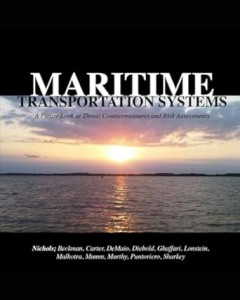Maritime Transportation Systems (Nichols et al., 2025) is the eleventh textbook in a distinguished series exploring Unmanned Aircraft Systems (UAS), Counter-UAS (CUAS), Unmanned Underwater Vehicles (UUVs), space, and maritime operations. Previous titles, including Survival in Space (Nichols & Alex, 2025), Advanced Technologies for Humanity (Nichols et al., 2024), Space Systems: Emerging Technologies and Operations (Nichols & Carter, 2022), Drone Delivery of CBNRECy – DEW Weapons (Nichols et al., 2021), Disruptive Technologies with Applications in Airline, Marine, Defense Industries (Nichols et al., 2020), Unmanned Vehicle Systems & Operations on Air, Sea, Land (Nichols et al., 2020), Counter Unmanned Aircraft Systems Technologies and Operations (Nichols et al., 2019), and both editions of Unmanned Aircraft Systems in the Cyber Domain (Nichols et al., 2018, 2022), have earned global recognition for their contributions to these fields.
The Maritime Transportation System (MTS) exhibits significant security vulnerabilities, often likened to a “Swiss cheese” model due to its multiple exploitable weaknesses. Through rigorous risk assessments, the Wildcat author team identified vulnerabilities with the greatest potential for threat exploitation, revenue loss, intelligence compromise to Foreign Intelligence Organizations (FIOs), or military harm. Key concerns include threats to submarine communication cables and landing points, U.S. Navy vulnerabilities in the South China Sea—particularly around Guam and Hawaii—cyberattacks on MTS Supervisory Control and Data Acquisition (SCADA) subsystems, port security, shipboard networks and communication systems, risks to advanced U.S. Navy weaponry, piracy and anti-piracy measures, UAS and UUV threats launched from maritime platforms, and offshore chemical engineering applications. The book concludes with strategic maritime defense recommendations, aiming to guide MTS managers and policymakers in securing their operational domains.
